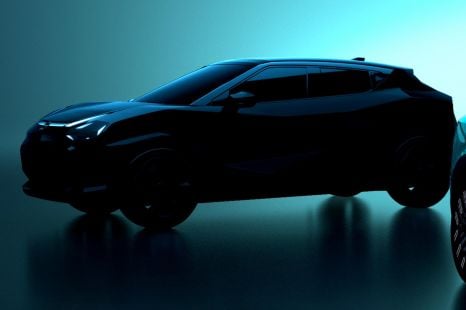

Damion Smy
Nissan Juke EV will use Leaf platform, due in 2026 - report
10 Hours Ago
With all the option boxes ticked, the Volkswagen T-Roc 140TSI is asking premium money. Does it deliver as a premium package?
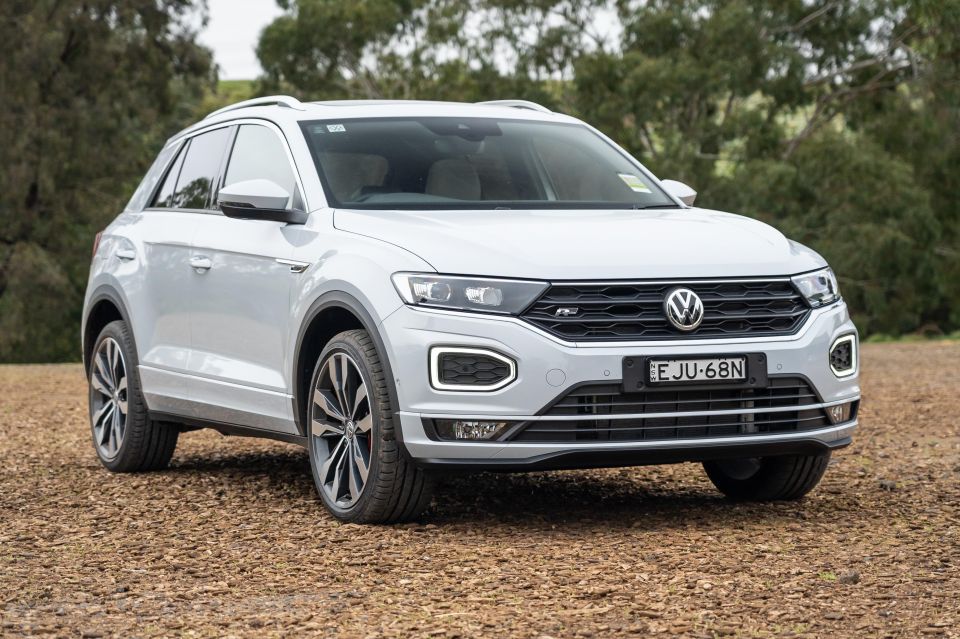
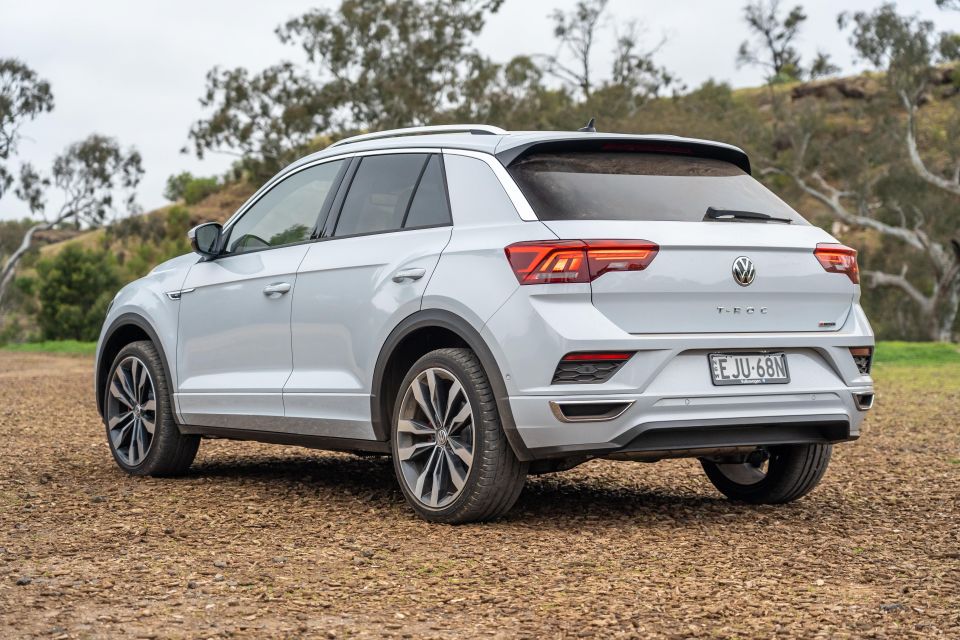

Marketplace Editor
New from
$40,490
excl. on-roads

Marketplace Editor
New from
$40,490
excl. on-roads


Marketplace Editor
New from
$40,490
excl. on-roads

Marketplace Editor
New from
$40,490
excl. on-roads
Quickly see how this car stacks up against its competition. Select any benchmark to see more details.
Where expert car reviews meet expert car buying – CarExpert gives you trusted advice, personalised service and real savings on your next new car.
Good things come in threes – or so they say. While most small SUVs are beige and blah, the Volkswagen Group has three good crossovers in Australia, all sharing common DNA.
The Audi Q2, Skoda Karoq, and Volkswagen T-Roc are essentially the same under the skin courtesy of the modular MQB architecture, and Down Under all offer warm performance variants competing in the same price bracket.
Want badge cachet and a dash of luxury? Get the Q2. Want more comfort and space? There’s the Karoq. Want the athletic-looking one with a bit of both? There’s the T-Roc.
Here on test we have the 2021 Volkswagen T-Roc 140TSI Sport – and yes, you did see William Stopford review one recently. The difference? This one has every possible option box ticked, whereas his tester was bog standard – if you’d even call it that.
The premise here is to see how Volkswagen’s fashionably late entrant into the small SUV category fares at the upper end of the class. At a little over $50,000 on the road it’s not only competing with high-spec versions of mainstream competitors, but also premium alternatives like the Audi Q2 as well as the BMW X2 and Mercedes-Benz GLA.
Can the VW uphold its ‘premium for the people’ pitch here? Let’s find out.

Prices for the T-Roc 140TSI start at $40,490 plus on-road costs, but our tester has two option packs fitted along with premium paint, adding $6100 to the list price. That’s $46,590 before on-roads, or around $52,000 drive-away in Melbourne.
Key rivals in the mainstream small SUV class include the Kia Seltos GT-Line, which asks for $42,990 drive-away, the Hyundai Kona Highlander 1.6T AWD ($40,200 before on-roads), the Mazda CX-30 G25 Astina with all-wheel drive ($43,490 before on-roads), and the T-Roc’s cousin, the Skoda Karoq 140TSI Sportline ($42,990 drive-away).
In the premium corner, the related Audi Q2 can be had in base front-drive 35 TFSI guise from $41,950 and all-wheel drive 40 TFSI quattro form from $49,400, while the BMW X2 sDrive18i costs from $47,900 and the cheapest Mercedes-Benz GLA200 kicks off at $55,100 – all prices here are before on-road costs.
As you can see, in 140TSI Sport form the T-Roc straddles the mainstream and premium ends of the small SUV class in terms of price, though represents decent value based on what you get for your spend – more on that next.
Buy your new car without the stress. It's fast, simple and completely free.

Great service from Travis and team, second time I have used this business would not hesitate to recommend them to anyone
Craig C.
Purchased a Ford Ranger in Sunshine Coast, QLD
CarExpert helped Craig save thousands on his Ford Ranger, now let us save you on your next new car.
Find a dealAt the end of the day, the price you pay at the dealership will be dependent on a number of factors such as when you want to buy (is the dealership chasing sales?), the stage of life of the model you’re purchasing (is a new generation being launched soon?) and of course your strength as a negotiator.
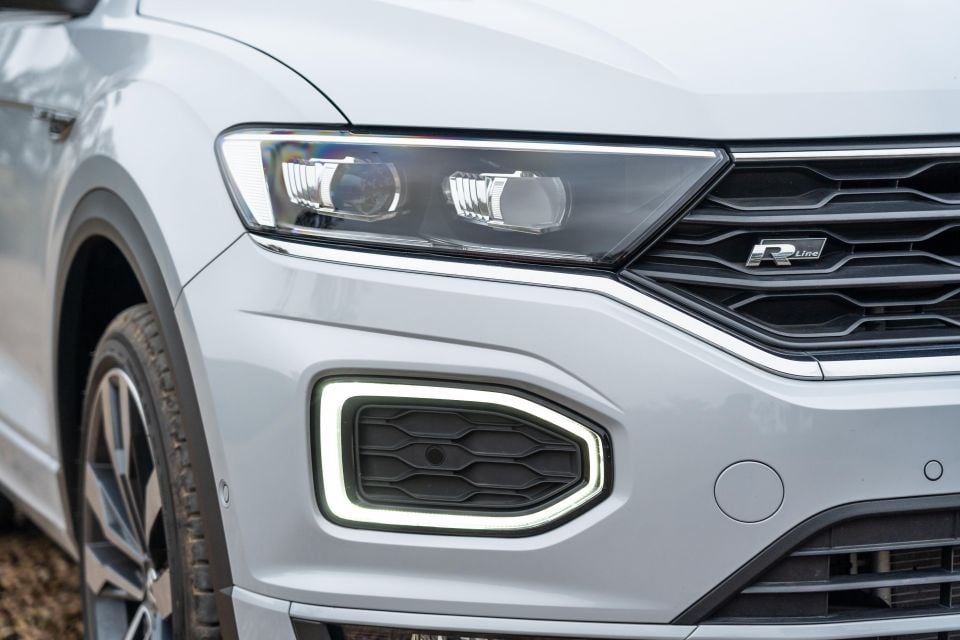
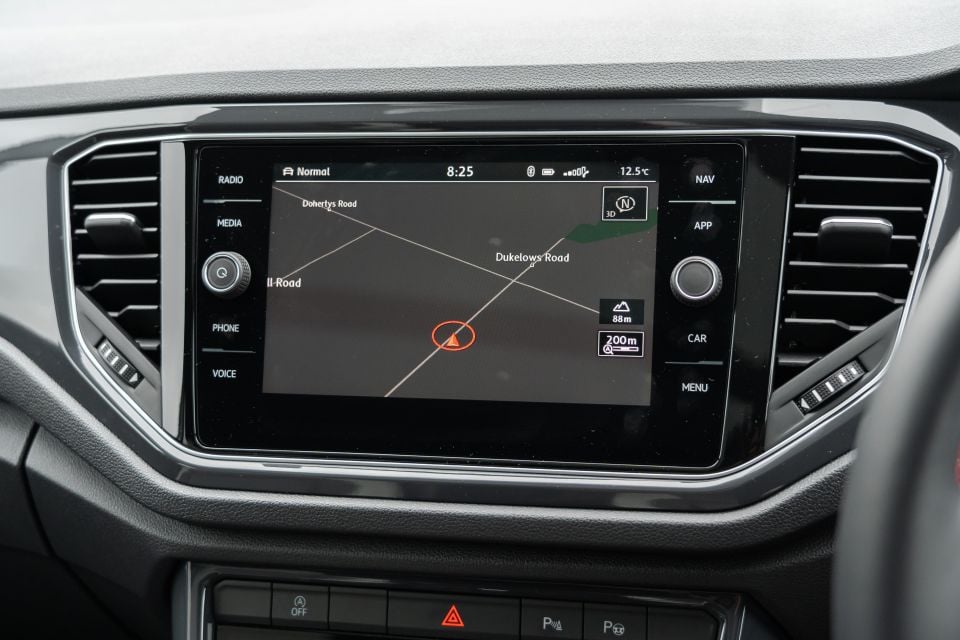
Standard specification is generous, and with all the options ticked the T-Roc leaves very little to be desired.
Highlights of the 140TSI Sport include 18-inch alloy wheels, red brake calipers, an 8.0-inch touchscreen with satellite navigation, wired Apple CarPlay and Android Auto, full LED headlights with auto high-beam, 10.25-inch Digital Cockpit instruments, dual-zone climate control with rear vents, and an auto-dimming rear mirror.
There’s also rain-sensing wipers, keyless entry with push-button start, sporty R-Line exterior styling, LED ambient interior lighting, power-folding side mirrors, rear privacy glass, Progressive Steering, and manual front seat lumbar adjustment.
Safety is also standard, with the T-Roc sporting the full gamut of driver assistance technologies including AEB with pedestrian detection, adaptive cruise control with stop/go, lane-keeping assist, blind-spot monitoring with rear cross-traffic alert, front and rear sensors, a rear-view camera, and park assist.
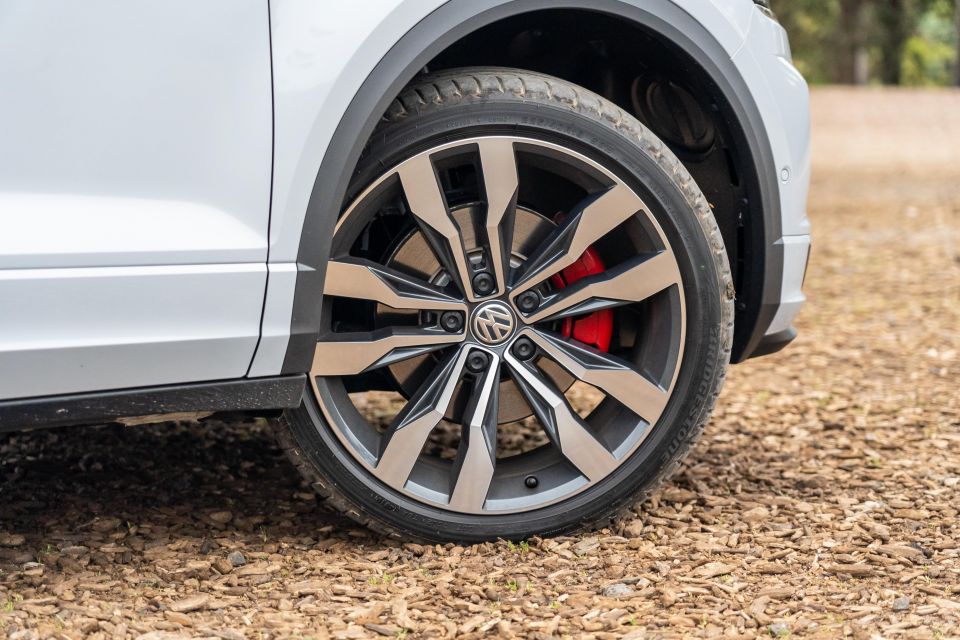
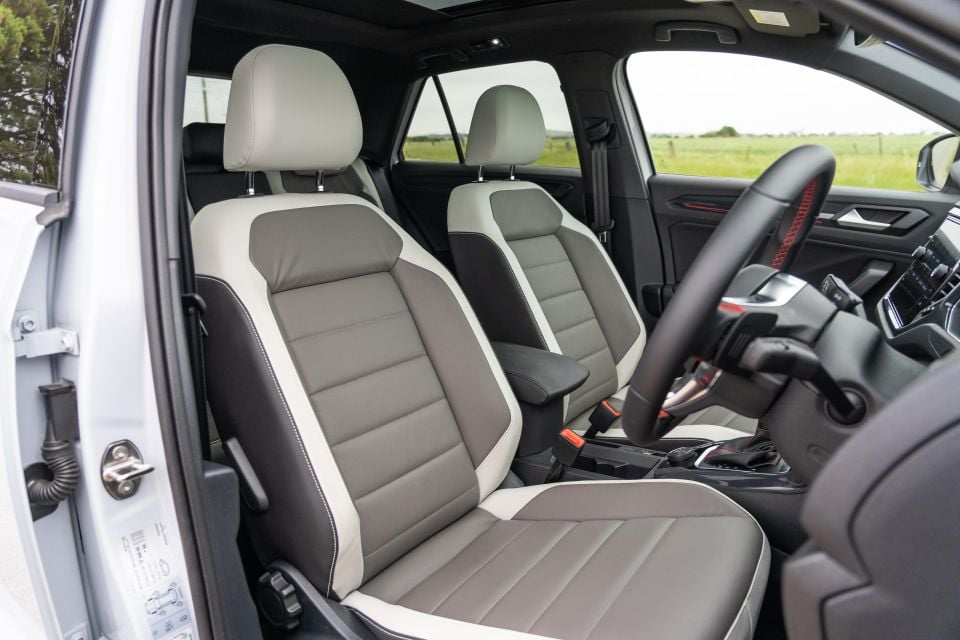
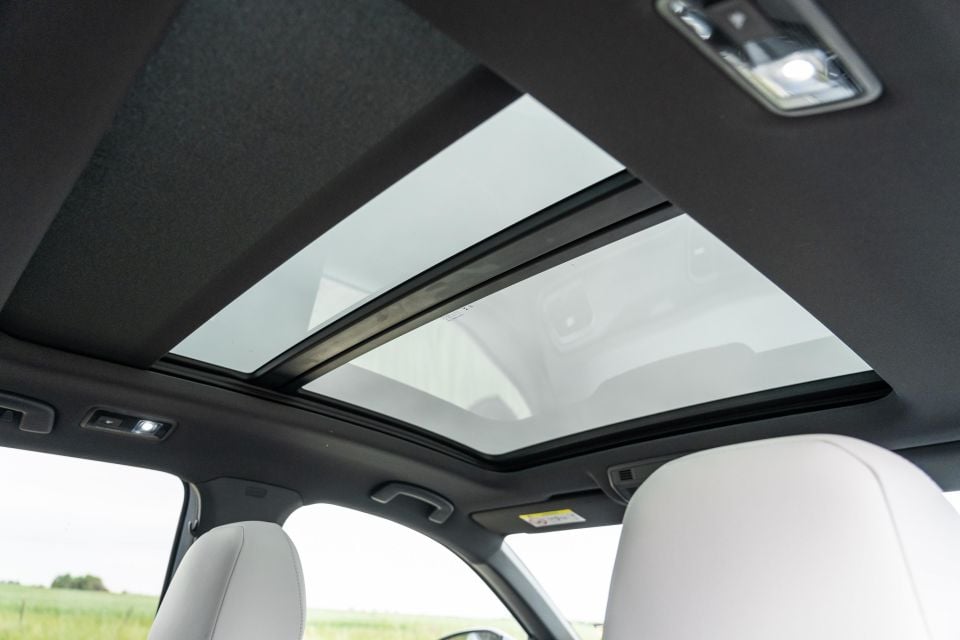
Ticking the Sound & Style Package ($2000) brings sexy 19-inch ‘Suzuka’ machined alloy wheels and 225/40 tyres, adjustable dampers, and a 300W beats premium audio system.
Our tester also has the Luxury Package ($3500) which adds Vienna leather-appointed upholstery, a powered panoramic sunroof and an electric tailgate. The White Silver metallic paint you see here also adds $600 to the ticket.
So, what don’t you get? In Australia we miss out on some of the options available overseas, like a contrasting roof and colourful cabin trim inserts. You also can’t get convenience features like electric seat adjustment with driver’s memory which you can get in a Golf – another close relative of the T-Roc mechanically.
There’s also no wireless phone charging, a feature that’s becoming commonplace at this end of the market, and there’s still no DAB+ radio like an increasing amount of rival models.
Other than that though, there’s not much to complain about in terms of spec.
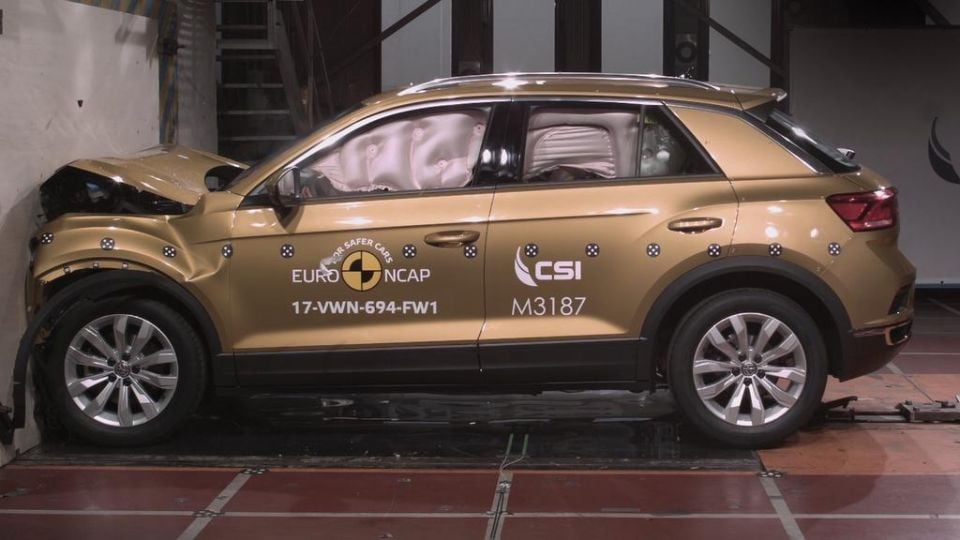
According to the experts, yes. The Volkswagen T-Roc wears a five-star ANCAP rating with 2017 a date stamp based on tests conducted by its overseas equivalent, Euro NCAP.
For adult occupant protection the T-Roc scored 96 per cent, as well as 87 per cent for child occupants, 79 per cent for pedestrians, and 71 per cent for safety assist.
The rating applies to all versions of the T-Roc sold in Australia and New Zealand.
Dual frontal, side chest-protecting and side head-protecting (curtain) airbags are standard, as are all three grades of autonomous emergency braking (City, Interurban and Vulnerable Road User). There’s also lane keep assist with lane departure warning fitted as standard equipment on all variants.
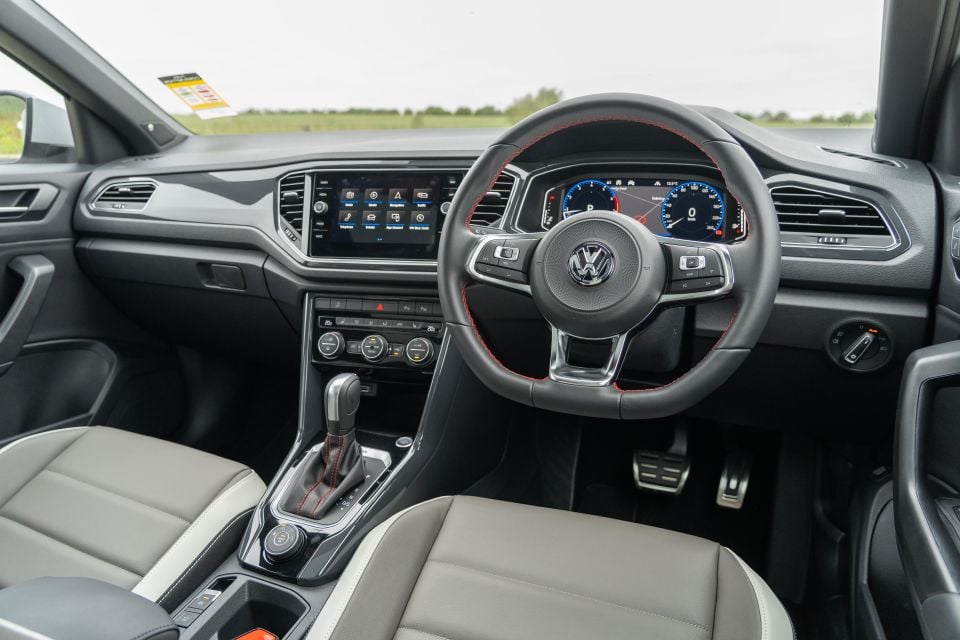
As a current owner of a Mk7.5 Golf GTI, I was very interested to see if the T-Roc would carry over its hatchback counterpart’s upmarket look and feel given the family ties – and the fact Australian models hail from Germany. Unfortunately, it’s not quite there.
While the overall design and layout is very Golf, as are the padded and leatherette-clad touch points, the T-Roc is more ‘Golf Lite’ in interior execution by being almost entirely finished in hard, scratchy plastics.
Even the dashboard and door tops are closer in finish to a Polo (though even that has a soft dash) than a Golf, and it’s disappointing given our tester is more than $50,000 on the road. It’s more disappointing when you consider its Audi and Skoda platform mates pack nicer interiors for similar money.
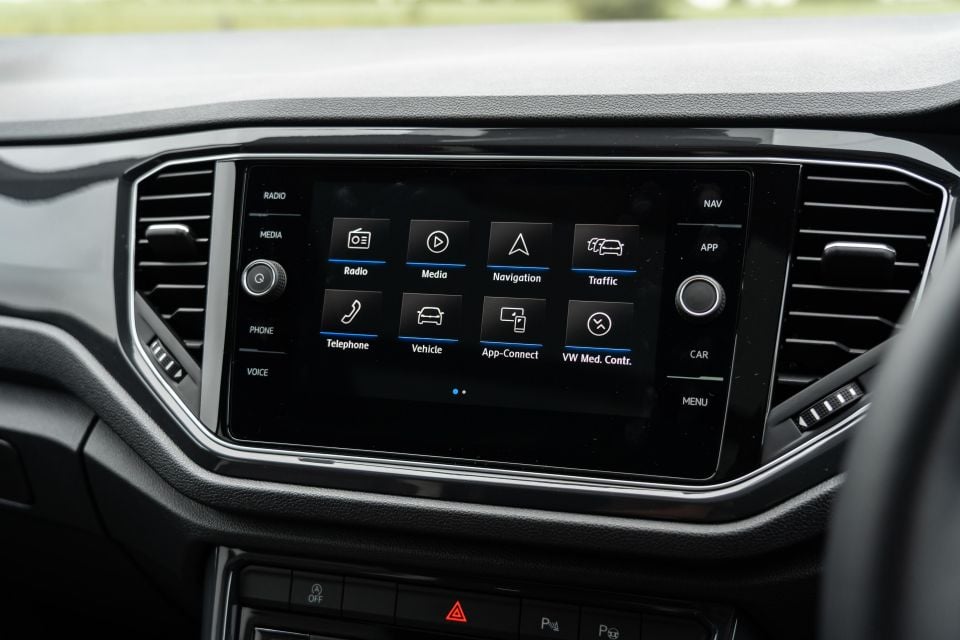
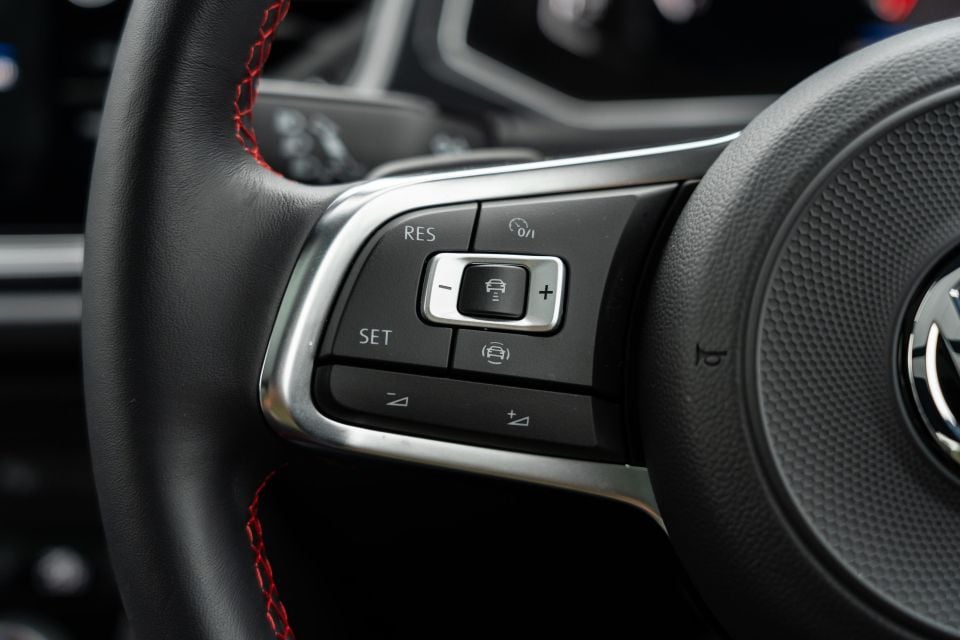
Looking at the T-Roc relative to its rivals from outside the Volkswagen Group, though, the compact crossover segments to prioritise design and technology over cabin tactility. From that standpoint it’s no worse than a top-spec Kia Seltos or Hyundai Kona for almost the same money.
If you can get past the hard surfaces, the presentation is typical Volkswagen in that it’s ergonomically sound and inoffensive in execution. The 8.0-inch touchscreen and 10.25-inch Digital Cockpit displays are nice touches, and the lovely D-shaped steering wheel – straight out of my Golf GTI – is a visual and tactile delight.
Our vehicle’s optional Luxury Package brings leather-accented upholstery in a combination of grey tones. I personally like the pop of lighter trim, but I know some will prefer the darker cabin you get with the standard sports cloth seats.

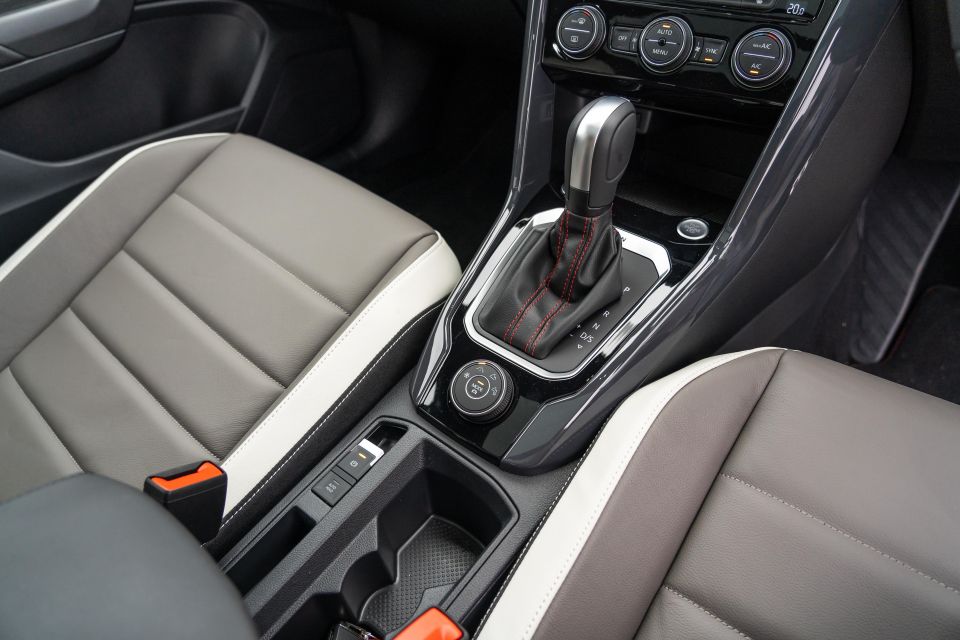
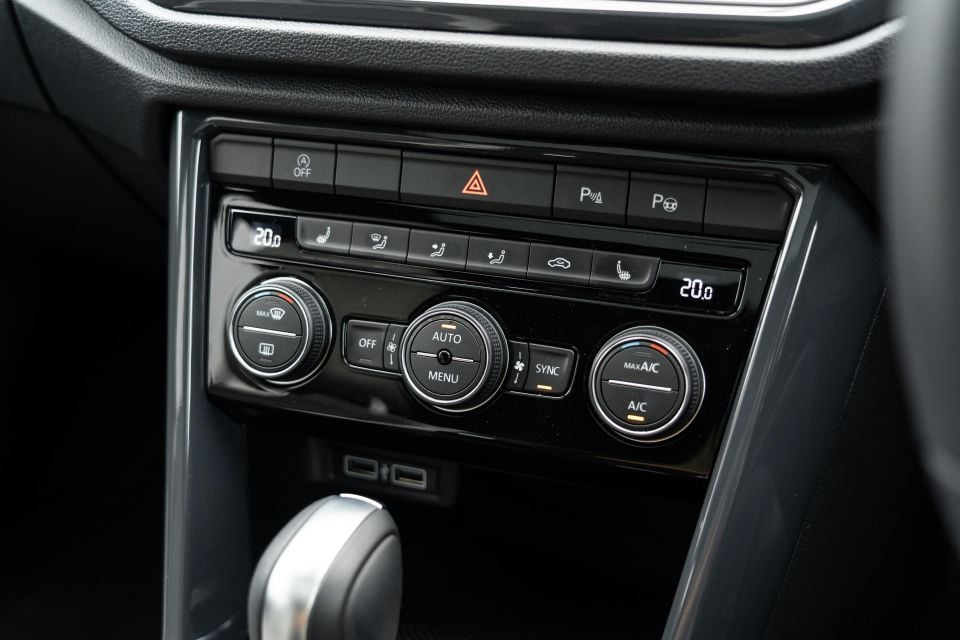
Irrespective of the aesthetic, the front pews are comfortable and supportive while offering plenty of (manual) adjustment – the lack of electric controls may be seen as not very ‘luxe’ for those paying $50,000 on the road.
The Luxury Package does, however, add front seat heating and a huge panoramic sunroof, both of which bring a touch of class. Even with the sunroof, headroom across front and back rows is pretty good.
Storage is decent up front without being standout. There’s cupholders and a decent cubby ahead of the shifter, but the central storage bin is tiny compared to that of a Golf and the door pockets aren’t flock-lined as you might expect from a Volkswagen.
As noted earlier, Apple CarPlay and Android Auto are wired, and there’s not a wireless phone charger like you’ll find in the smaller Polo and T-Cross. All the switchgear feels damped and has a nice tactile feel, which is a nice contrast to the average cabin plastics.
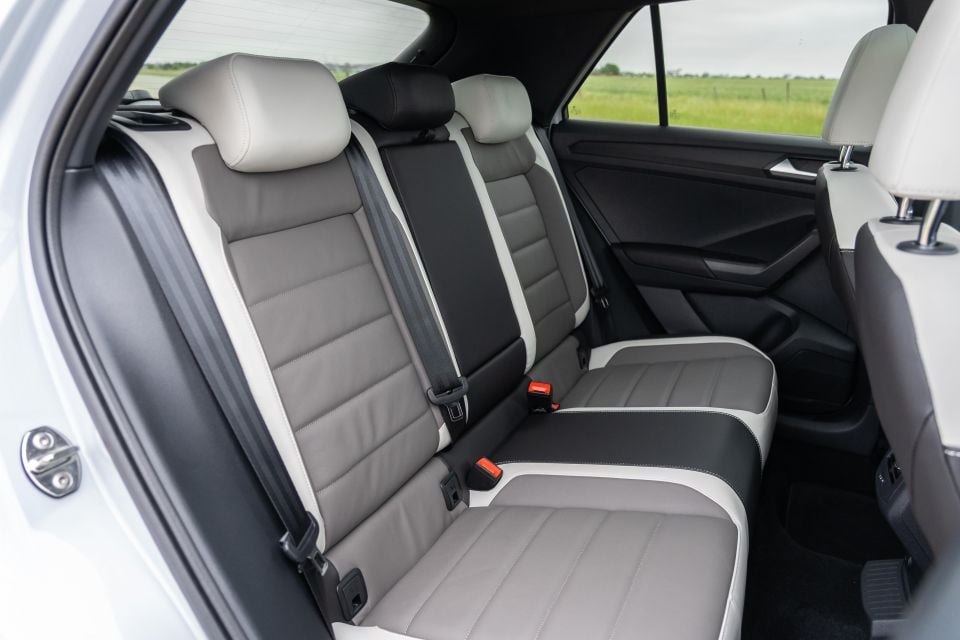
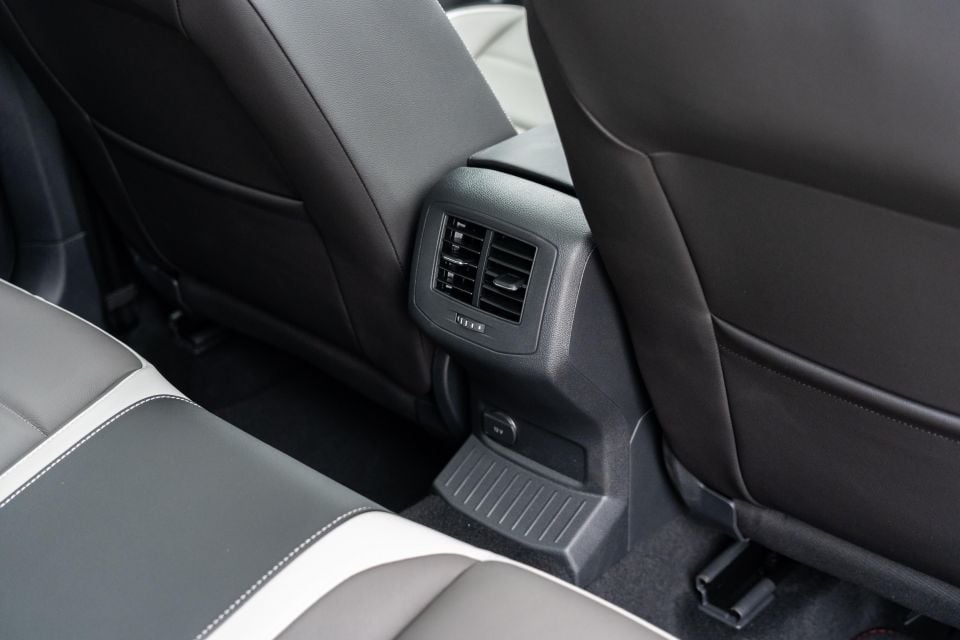
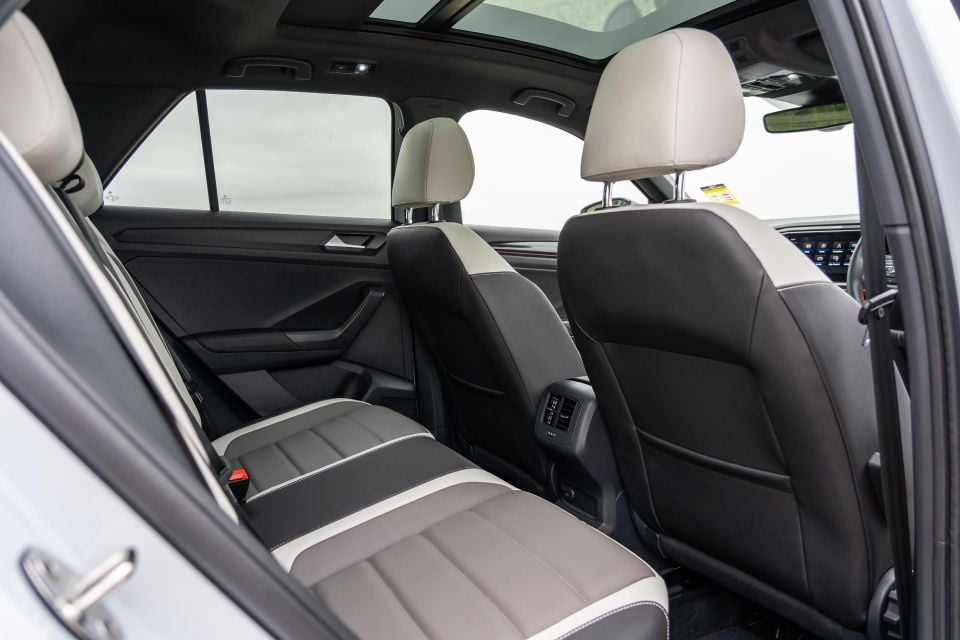
Moving into the second row, the T-Roc can’t match the likes of the Kia Seltos for outright legroom but still manages to fit tall occupants behind a tall driver, much like the related Golf.
I’m a little over six-foot-one and I could comfortably sit behind my own driving position, even with the panoramic roof. Like the Golf, the back seat’s lower cushion is angled upwards for good under-thigh support, which isn’t always the case in the compact segments.
You could easily carry four adults without any dramas and five at a pinch for short journeys. Kids will be very happy back there too, at least in terms of space.
Rear amenities are limited to air vents (still not the norm for the class), a 12V power outlet, map pockets behind both front seats, door pockets large enough to fit a decent-sized bottle, and a fold-down centre armrest with cupholders.
There’s also big windows so the little ones can see out without getting too car-sick, and there’s ISOFIX child seat anchor points on both outboard rear pews.
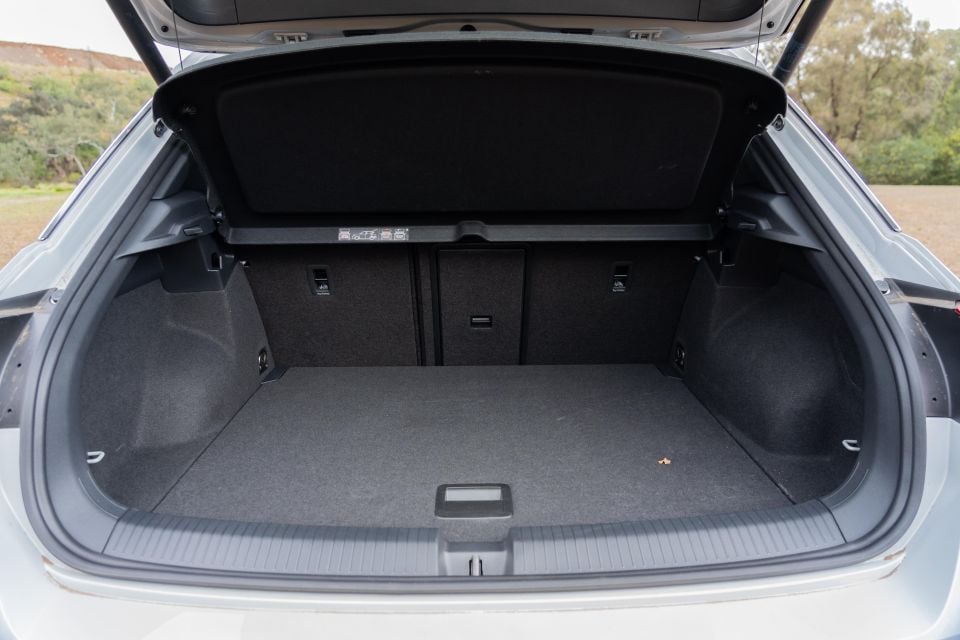

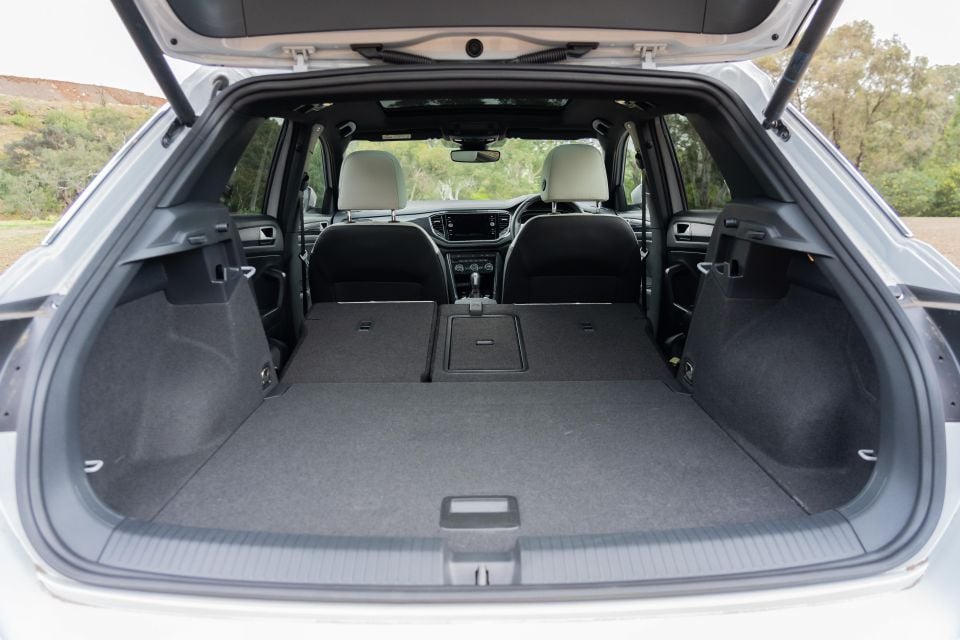
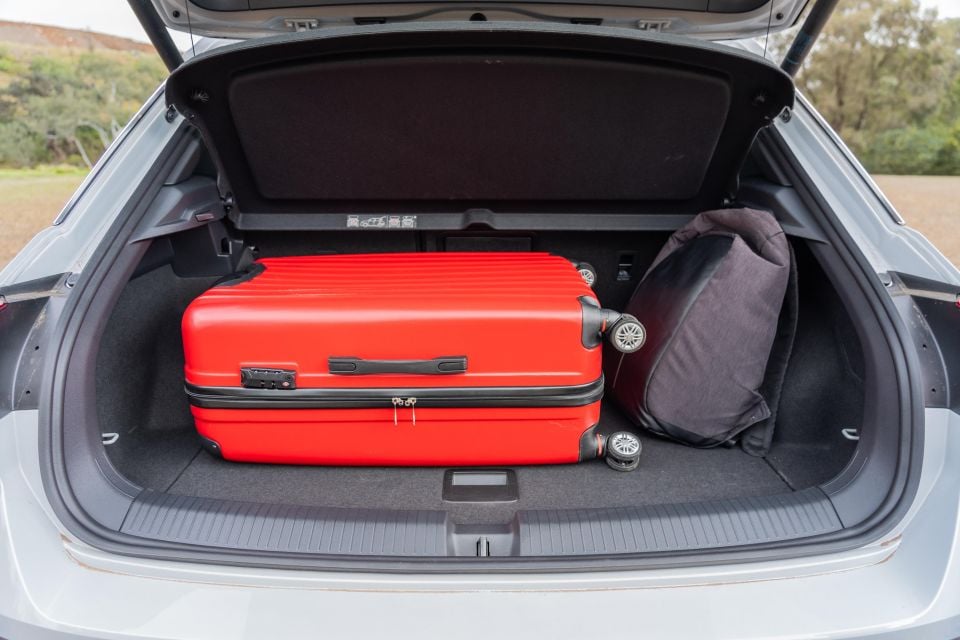
Under the electrically-operated tailgate (also part of the Luxury Package), the T-Roc 140TSI offers a claimed 392L of space, which is more than a Golf hatch but not quite there against the Karoq and Seltos, which quote in excess of 420L.
It’s worth noting the smaller boot is due to the all-wheel drive hardware under the floor. If you want a T-Roc and boot space is a priority, the front-drive 110TSI Style due before the end of 2020 should offer the 445L quoted internationally thanks to its extra under-floor cubby.
With the second row folded flat, the T-Roc offers 1237L of space. Under the boot floor is a space-saver spare, and you’ll also find the subwoofer for the optional 300W Beats sound system (part of the Sound & Style Package).
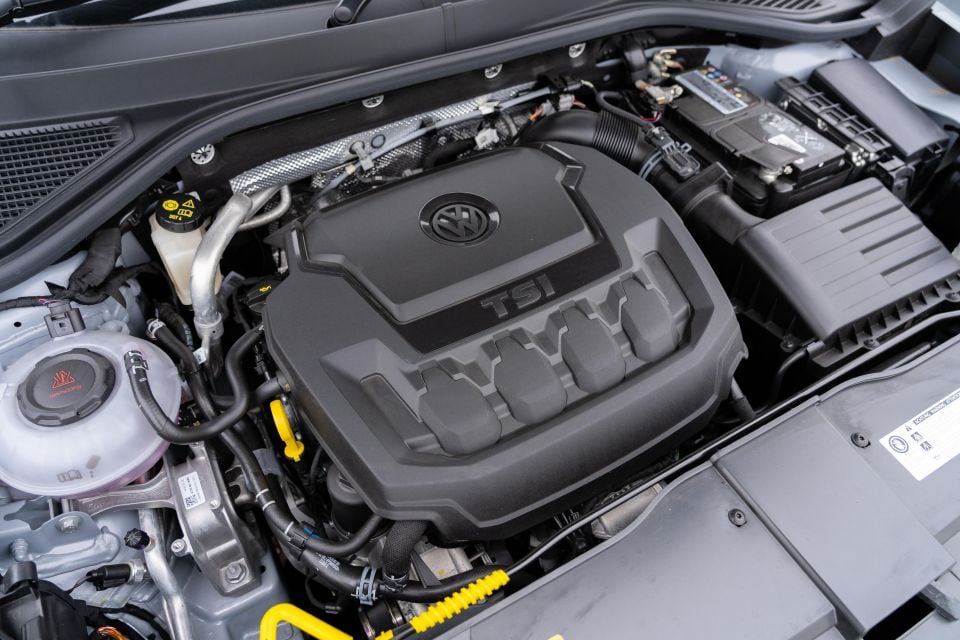
It’s all in the name. The T-Roc 140TSI is powered by a 2.0-litre four-cylinder turbo petrol outputting 140kW between 4900 and 6000rpm, and 320Nm between 1500 and 4800rpm. It’s also fitted with idle stop/start technology.
Drive is sent to a 4Motion on-demand all-wheel drive system through a seven-speed wet dual-clutch automatic.
The T-Roc’s drivetrain is virtually identical to that of the Q2 40 TFSI quattro and the Karoq 140TSI Sportline, though its cousins quote different engine speed intervals for maximum torque.
Volkswagen claims the T-Roc 140TSI can accelerate from 0-100km/h in 7.2 seconds, making it fractionally quicker than the larger Skoda (7.3 seconds) but more than half a second slower than the Audi (6.5 seconds).
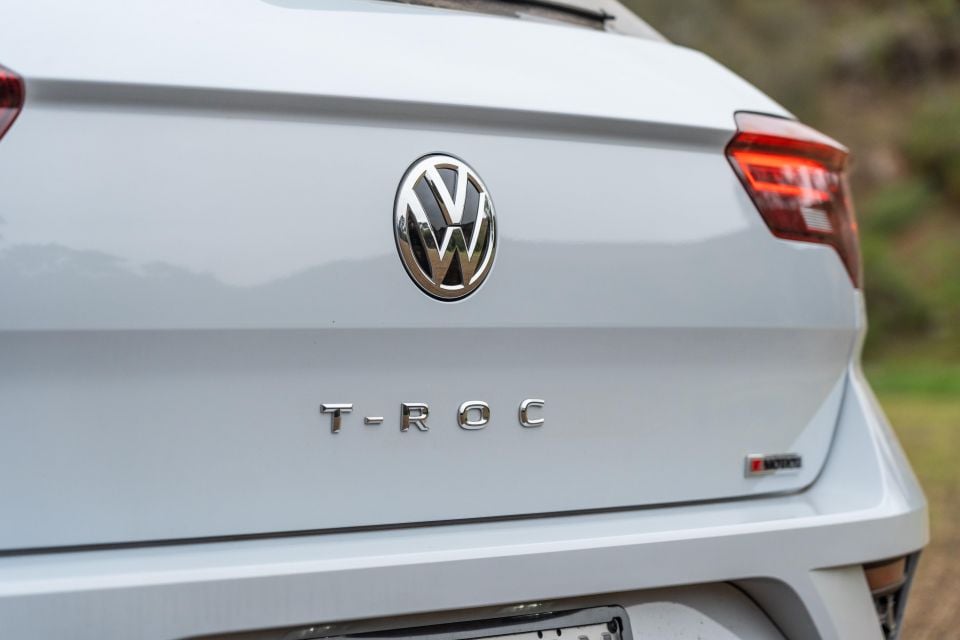
The Volkswagen is actually the lightest of the three at 1461kg (tare), about 60kg lighter than the Audi and almost 100kg lighter than the Skoda.
Regardless, that makes the T-Roc one of the quickest models in its class, something of note for buyers looking for a crossover that puts the ‘sport’ in ‘SUV’.
In terms of fuel consumption, Volkswagen claims the T-Roc 140TSI will use 7.2L/100km on the combined cycle, with 95RON premium unleaded required as a minimum. The fuel tank measures a healthy 55 litres.
We managed an impressive 7.2L/100km (indicated) over a 25km test loop with a mix of suburban and freeway driving, and finished our week with the T-Roc showing an indicated 8.4L/100km.
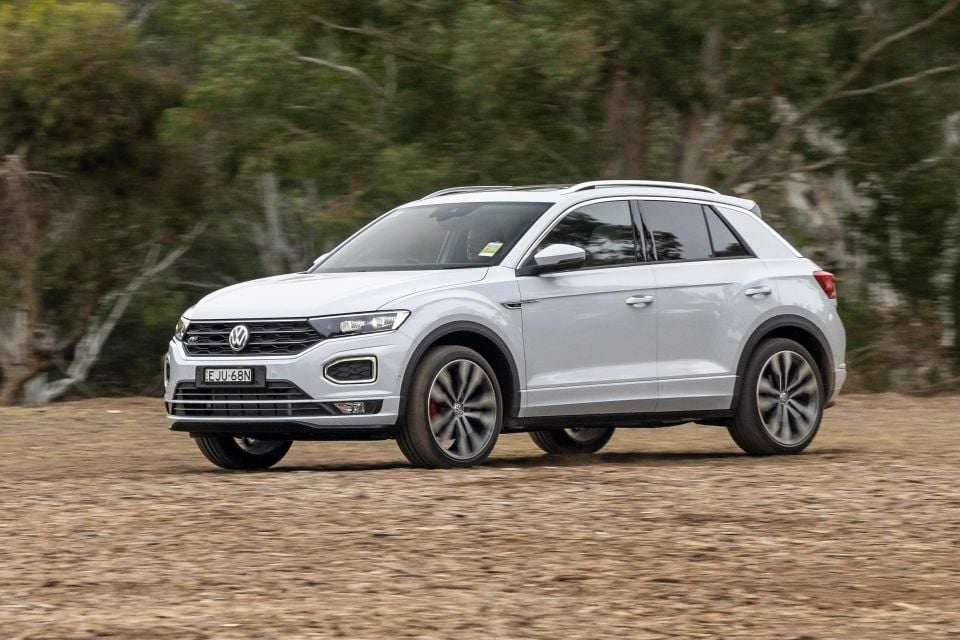
On the road, the T-Roc has a lot to brag about. It drives like a Golf in most ways, and in some ways it’s even better.
The fully-optioned test car here includes the Sound & Style Package, which brings big 19-inch wheels and low-profile tyres as well as adaptive chassis control – or adaptive damping to you and I.
It’s the latter that really adds a degree of refinement and comfort on the move, as the T-Roc’s extra ride height over the equivalent Golf brings room to move so the ride is cushy, compliant, and downright impressive.
Despite the ‘Sport’ branding and aggressive looks, I spent most of my time with the T-Roc set in Comfort mode, as it brought the most SUV-like drive experience without compromising body control or engagement.
A couple of freeway runs and commutes over lumpy Eastern Melbourne tarmac demonstrated just how good the T-Roc’s ride can be. Regardless of the speed it’s settled, refined, and feels like a much bigger vehicle.
Fiddling around with all the settings, Normal was notably firmer than Comfort, and the ride was tighter again in Sport. Sport was very close to the Normal setting in my Golf GTI, and Normal in the T-Roc is quite close to Comfort in the hot hatch.
Having not driven the passively-damped setup sampled by Will Stopford, I would argue the optional adaptive chassis is desirable and worth optioning, given the base car rides on fixed suspension which mightn’t be as compliant on pothole-ridden suburban streets.
Performance doesn’t really suffer, though there are some complaints on my end here.
The 140kW/320Nm 2.0-litre turbo and seven-speed DSG are a good combination once you’re moving, with quick shifts and effortless low-down torque. However, there was a marked difference in the performance of the T-Roc’s wet-type dual-clutch auto and the high-torque unit used in my Golf.
Where the GTI feels much more like a conventional automatic in the way it crawls and launches from a standstill, the T-Roc’s DSG can be a little slurry as the clutches engage off the line, and feels a bit elastic from launch or as it shifts from first into second.
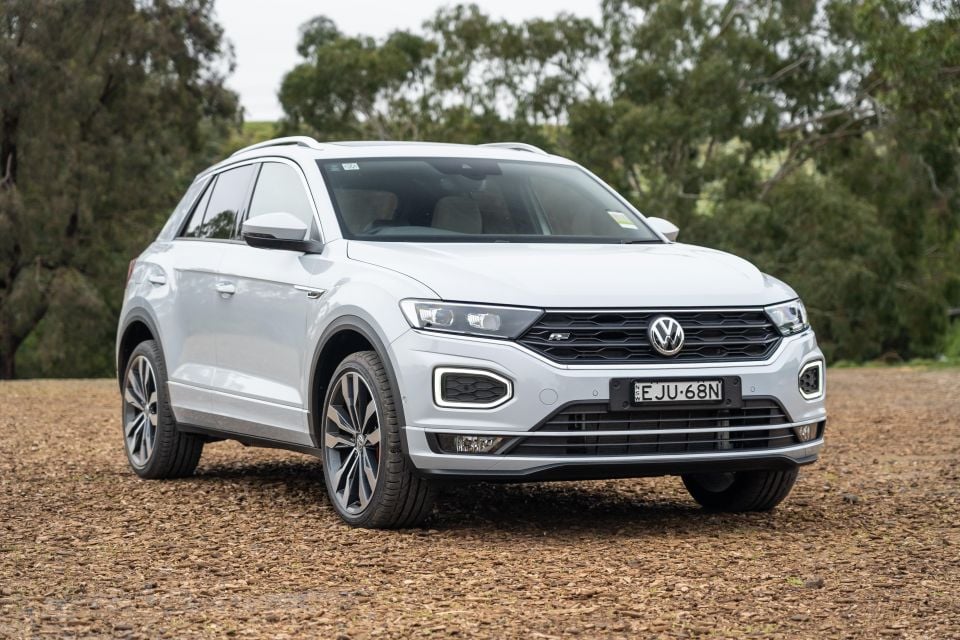
Where expert car reviews meet expert car buying – CarExpert gives you trusted advice, personalised service and real savings on your next new car.
In normal driving you’ll get used to it, but if you’re looking for a sharper, sportier drive it may attract complaints or have owners switching the transmission into Sport for quicker response off the line.
Under heavy throttle the four-pot turbo has a sporty, gruff tone which gives off a hot hatch vibe, though the T-Roc 140TSI Sport’s 7.2-second 0-100km/h claim is a little off the pace compared to genuine performance hatchbacks in the same price bracket. There’s a full-fat T-Roc R overseas with the 221kW 2.0-litre turbo from the Golf R, but that’s sadly off the table for Australia until at least 2022.
Once at speed though, the T-Roc settles into seventh gear barely breaking a sweat. Engine noise is non-existent and the cabin is well-insulated from road and wind noise, perhaps with the exception of the roughest of blacktop where the low-profile tyres transmit a bit of sound into the cabin.
The steering is well-weighted and adjustable through the drive modes like the suspension and drivetrain, with a predictable, accurate feeling that’s not too heavy or too light in its non-Sport settings.
In the bends the T-Roc is eager and hatch-like, offering a sporting drive that’s right up towards the top of the class for both composure and engagement.
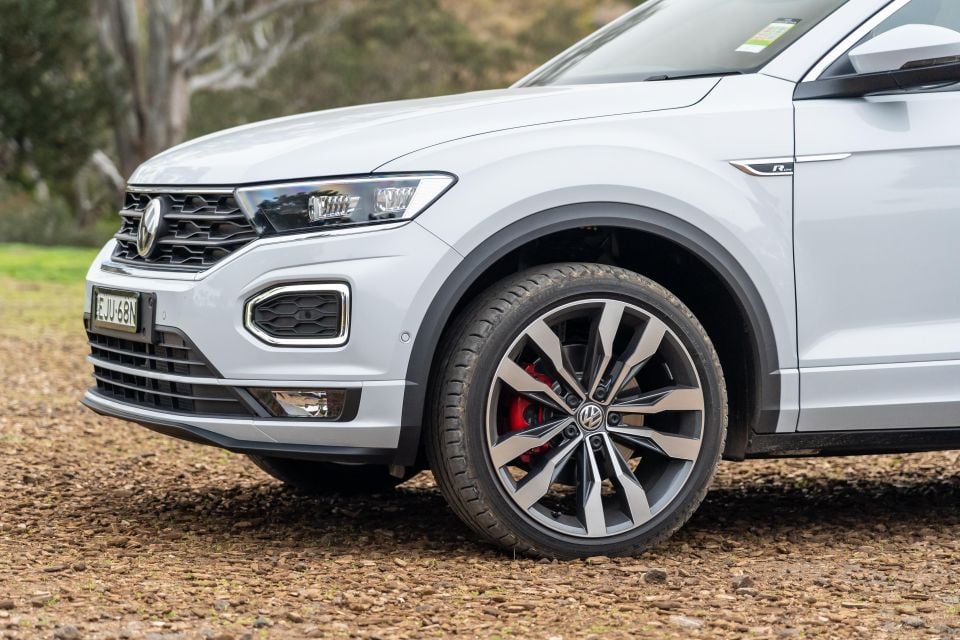
Relative to its segment – and my love for my Golf GTI aside – I’d go as far to say the T-Roc is quite possibly the driver’s pick in the small SUV segment, offering a balance of performance, handling and all-round usability that certainly ranks amongst the best of all compact crossovers, mainstream or premium.
When you’re not using the snappy steering-mounted paddle shifters and things settle into a straight-line cruise, the T-Roc’s array of assistance systems bring a premium-style vibe to the drive experience.
The adaptive cruise control with stop/go, as well as lane-keeping assist with adaptive lane guidance combine to provide semi-autonomous highway driving capability. Unlike some rivals, Volkswagen’s technology is more user-friendly than intrusive
Further, the standard-fit blind-spot monitoring and rear cross-traffic alert are good features to have, working to combat the large blind spot on the C-pillar.
While the interior materials left a bit to be desired earlier, the T-Roc shines on the road and certainly makes up points.
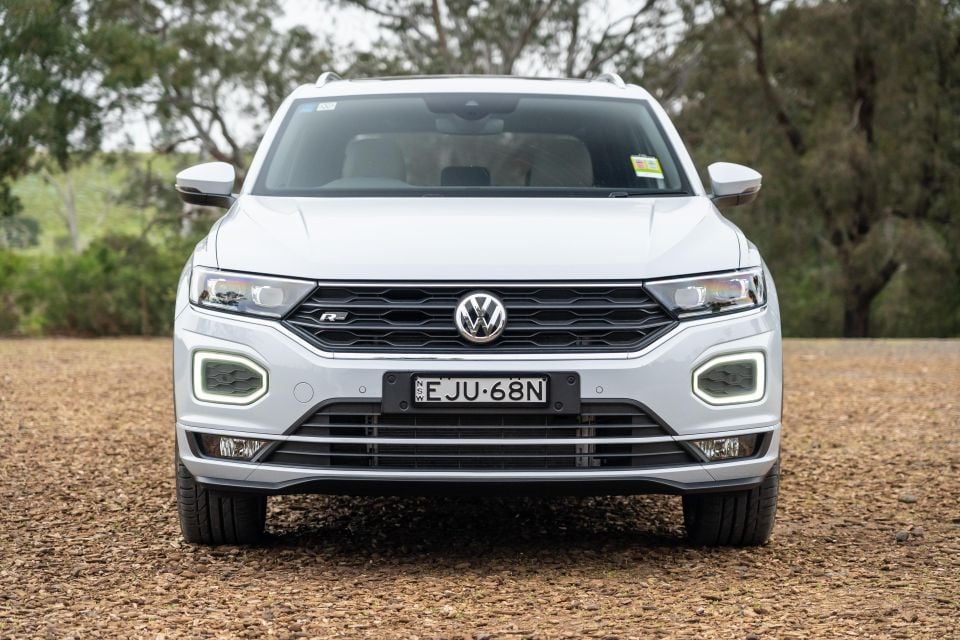
Like the wider Volkswagen range, the T-Roc is covered by a five-year, unlimited-kilometre warranty.
Buyers can purchase a three- or five-year Care Plan which covers scheduled maintenance, priced from $1300 and $2100 respectively – the latter including a free first service.
That averages out to a little over $400 per year, with servicing required every 15,000km or 12 months – whichever comes first.
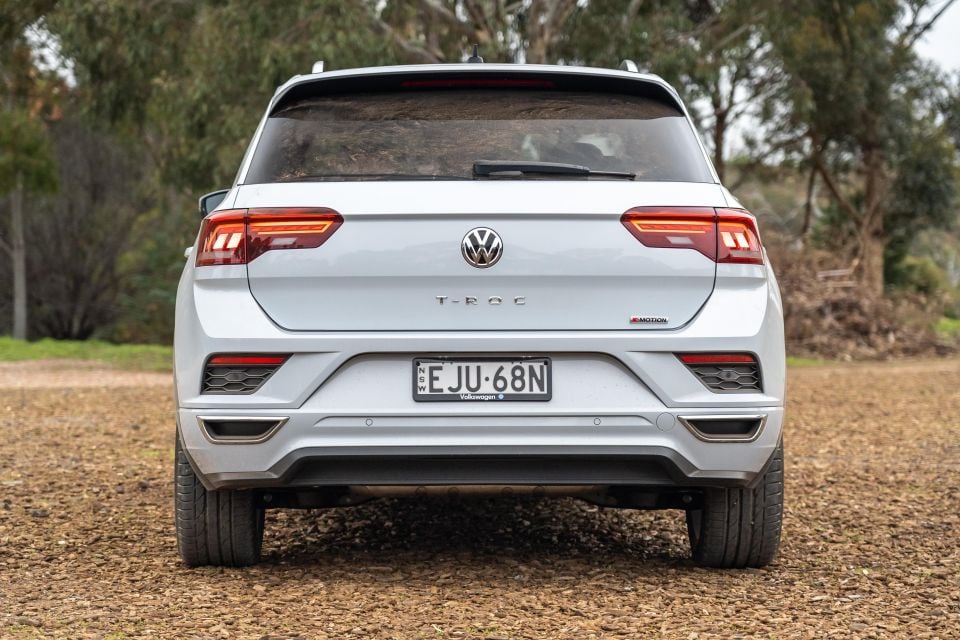
Each package also represents a saving over paying as you go for servicing – quoted at $166 for the three-year package and $696 for the five-year one.
There’s also complimentary roadside assistance for the life of your Care Plan, and/or each time you service your Volkswagen at a participating dealer for up to 10 years since the start date of the vehicle warranty.
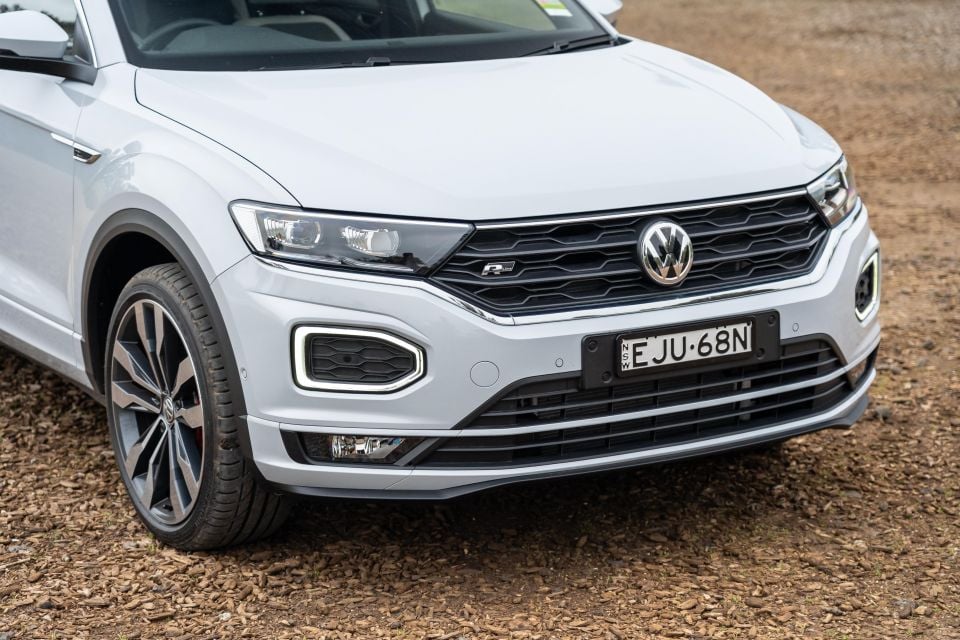
I didn’t expect to like the T-Roc as much as I did. Anyone who has listened to my various podcast appearances would know my attitude to SUVs charging thousands more than the equivalent passenger car.
But the T-Roc has a lot going for it. The design is ace, it has all the features and tech you’d expect from a $50,000 car, and it really does drive like a dream with its adaptive suspension trickery.
Average cabin plastics aside – which is becoming an increasingly common theme in the compact SUV segments both mainstream and premium – the T-Roc offers a genuinely upmarket and engaging experience whether parked in your driveway, on the highway, or carving up a twisty B-road.
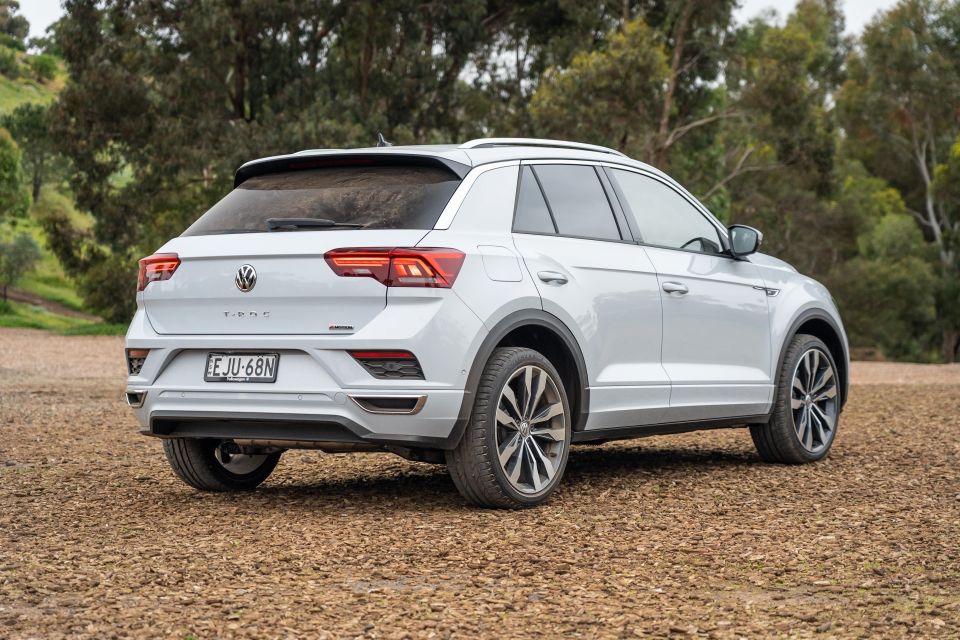
Fully loaded as we’ve tested here, it looks and feels (mostly) premium, while offering a better five-year warranty.
Personally, I see more value in a fully-loaded Skoda Karoq Sportline with its nicer cabin trimmings and extra space, but the Volkswagen is sexier in both form and badge cred.
Hopefully, a mid-life refresh in the coming year or so will address the interior tactility issues and give the T-Roc that extra touch of class that the Volkswagen brand is so well known for.
MORE: Volkswagen T-Roc pricing and specs MORE: Volkswagen T-Roc news and reviews
Where expert car reviews meet expert car buying – CarExpert gives you trusted advice, personalised service and real savings on your next new car.
James Wong is an automotive journalist and former PR consultant, recognised among Australia’s most prolific motoring writers.


Damion Smy
10 Hours Ago
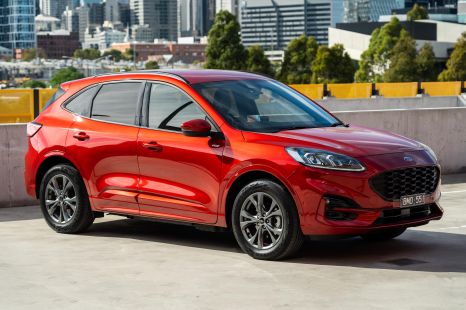

Damion Smy
18 Hours Ago
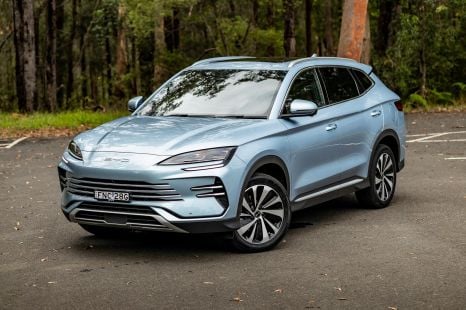

Josh Nevett
19 Hours Ago


Max Davies
1 Day Ago


Ben Zachariah
2 Days Ago
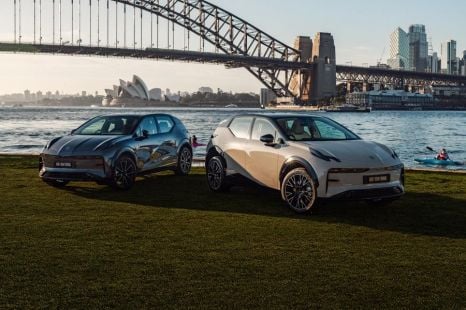

Max Davies
2 Days Ago